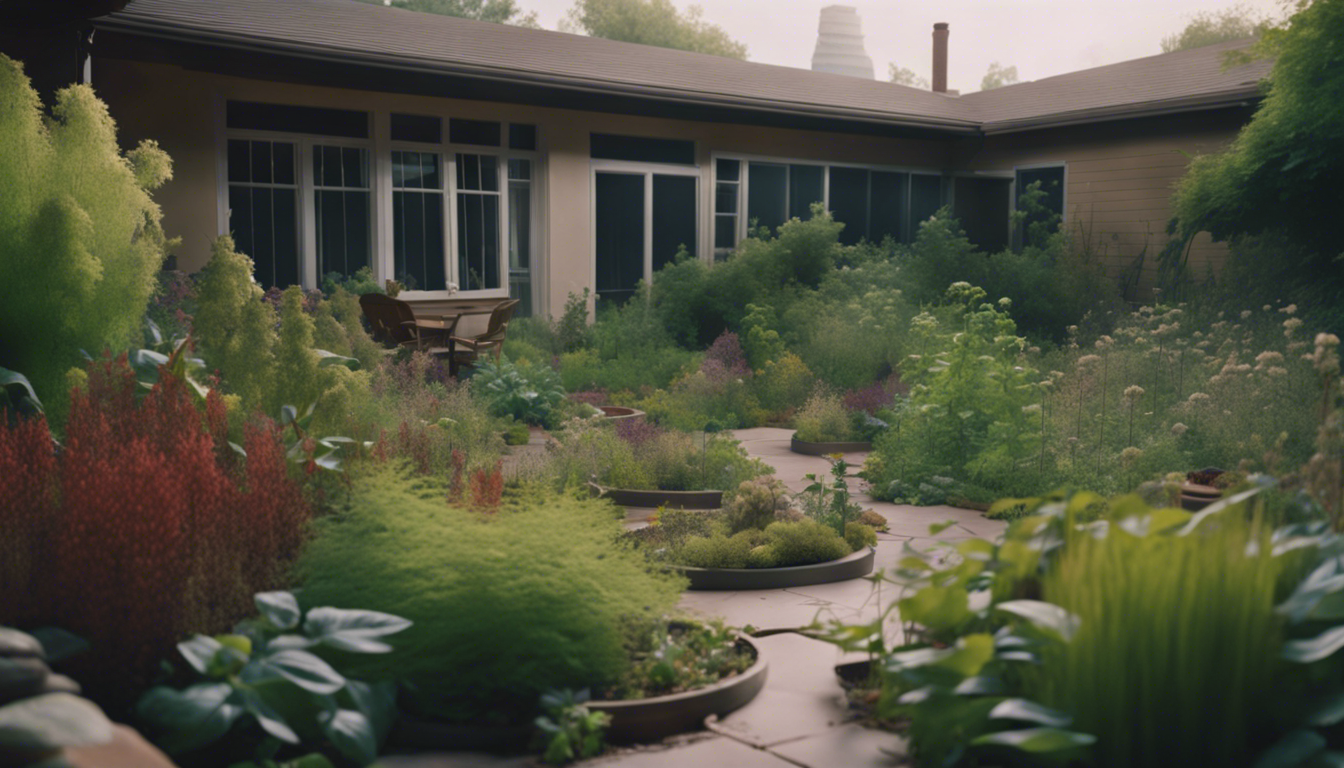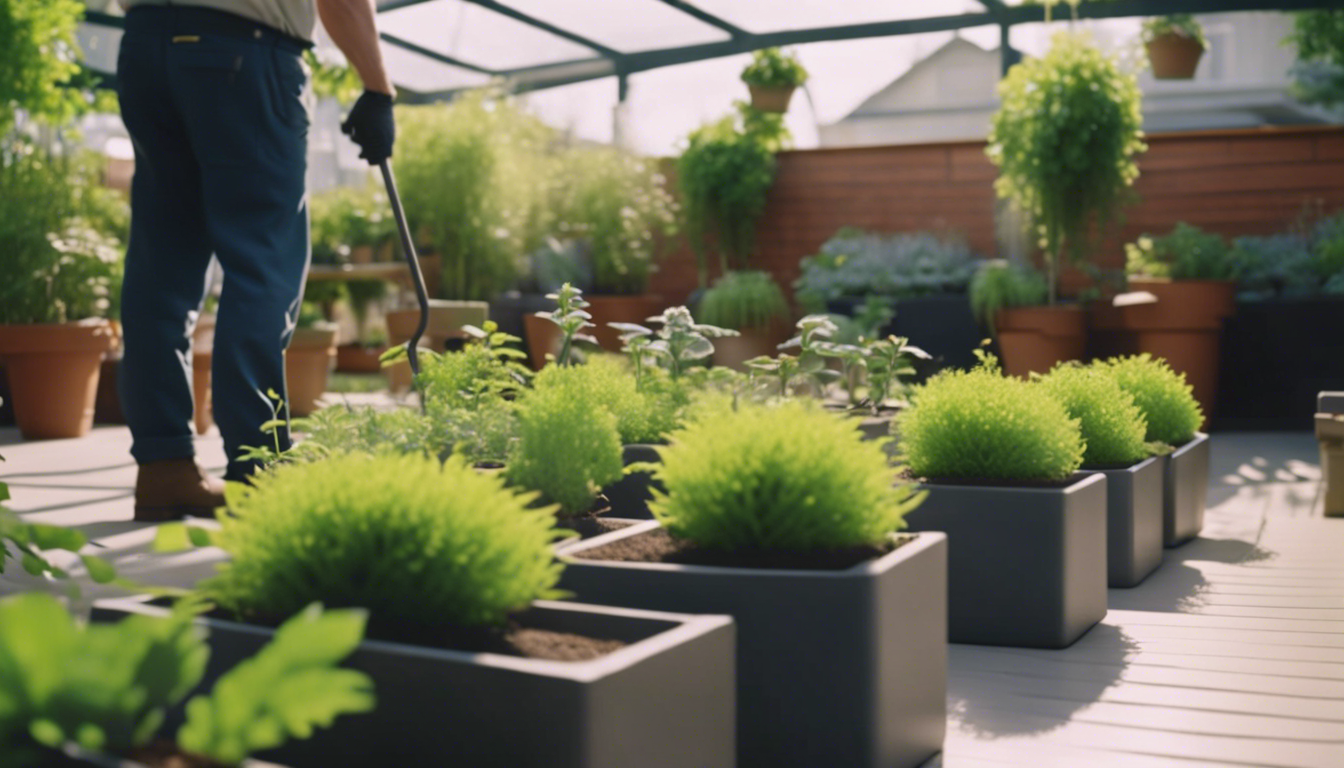
Avoiding Invasive Plants in Your Patio

To avoid invasive plants in your patio, choose native or non-invasive species that won’t harm local ecosystems. Regularly check and manage your garden to prevent fast-growing invasive species from taking over and displacing native plants.
Introduction to Invasive Plants in Patio Monrovia
Invasive plants are not native to an area but can spread quickly and harm local environments. They can change how ecosystems work by affecting native plants and animals. For example, they can alter soil quality, water availability, and even the local climate. These changes can make it hard for native species to survive.
- Invasive species can come from anywhere in the world and cause big problems for local ecosystems. They can grow fast, take over large areas, and push out native plants and animals.
- Climate change is making it easier for invasive plants to spread. Warmer temperatures and more CO2 in the air help these plants grow in new places.
- Scientists have found that managing invasive plants locally can help ecosystems become more resistant to climate change.
- Invasive plants can affect the ground and water in an area, changing things like nutrient levels and how much water is available. This can make it hard for native plants and animals to live there.
- Some invasive plants, like Kudzu and Japanese knotweed in the United States, are really good at taking over because they work well with local soil microbes and release more CO2.
Invasive plants are a big challenge, but understanding and managing them can help protect our local ecosystems and the animals and plants that live in them.

Top 5 Invasive Plants to Avoid in Your Patio
When designing your patio garden, it’s smart to avoid invasive plants. These plants grow fast and take over, pushing out other plants and harming the environment. Here are five invasive plants to steer clear of:
- Butterfly Bush (Buddleja davidii): This plant spreads quickly and can crowd out local plants. Instead, try planting American beautyberry or buttonbush to support local wildlife.
- Chinese Wisteria (Wisteria sinensis): It looks beautiful but can easily take over your garden. Ivory sedge is a great alternative that won’t overrun other plants.
- English Ivy (Hedera helix): Although popular for its looks, English Ivy can damage walls and other structures in your patio. Opt for native vines that are less aggressive.
- Japanese Barberry (Berberis thunbergii): This shrub not only spreads rapidly but can also host pests. Swap it out for native shrubs that offer beauty without the hassle.
- Purple Loosestrife (Lythrum salicaria): It might look nice, but it invades wetlands and chokes out native plants. Consider planting Golden Alexander for a less invasive option.
Remember, choosing the right plants can make a big difference in your garden and the local ecosystem. Always opt for native or non-invasive alternatives to keep your patio looking great without harming the environment.
Alternatives to Invasive Patio Plants
Creating a patio haven that’s both beautiful and eco-friendly doesn’t mean you have to use plants that will take over your garden and harm local ecosystems. Here are some smart swaps for those invasive species:
- Replace Butterfly Bush with California Lilac. California Lilac attracts pollinators without the invasive spread.
- Swap Japanese Honeysuckle for Trumpet Honeysuckle. It offers the same charm without endangering local plants.
- Opt for American Bittersweet instead of Oriental Bittersweet. It’s just as ornamental but supports rather than threatens native wildlife.
- Choose Catalpa over Empress or Princess Tree. Catalpa provides shade and beauty without the aggressive growth.
- Use Virginia Creeper in place of English Ivy. It covers ground quickly without damaging structures or native plants.
- Pick Winged Sumac over Tree of Heaven. It adds vibrant fall color without becoming a nuisance.
- Select Yaupon Holly instead of Brazilian Peppertree. It’s a native shrub that offers berries without the invasive traits.
- Inkberry can replace Chinese Privet, providing dense foliage and berries without the invasive spread.
For those looking to avoid plants altogether, consider these landscaping ideas: – Make furniture the focal point of your patio. – Use water features, sculptures, or garden art to add interest. – Integrate a variety of materials and colors through hardscaping.
Remember, choosing native plants or non-plant alternatives not only enhances your patio but also supports local wildlife and ecosystems.

Preventing and Managing Invasive Plants in Your Patio
Preventing and managing invasive plants in your patio requires a smart approach. Invasive plants can quickly take over, harming your outdoor space. Here’s how to tackle them effectively:
- Prevention is Key: The best way to handle invasive plants is by stopping them before they start. Regular checks and knowing what plants to avoid are crucial steps. The USDA emphasizes prevention as the most cost-effective strategy. Learn about preventive measures from resources like the USDA’s efforts to combat invasive species.
- Early Detection and Rapid Response: If invasive plants do appear, identifying them early and acting fast is essential. This approach is much cheaper and easier than dealing with a full-blown invasion. Tools like the AIS Explorer in Minnesota help optimize inspections for aquatic environments, which can be adapted for your patio needs.
- Use Best Management Practices (BMPs): BMPs are guidelines that help manage invasive plants effectively. They include identifying, documenting, and controlling invasive species on your property. Resources like the Ontario Invasive Plant Council offer BMP guides for various invasive plants.
- Professional Help: Sometimes, the invasion is too much to handle alone. In such cases, seeking professional help is wise. At 360 Remodeling and Building, we offer services like Patio Remodel that can help redesign your space, making it less hospitable to invasive species.
- Sustainable Approaches: Looking for long-term solutions is vital. Using waste from invasive plant control actions can preserve local biodiversity while offering economic benefits. This innovative approach requires careful planning and execution.
- Stay Informed and Involved: Public awareness and involvement are critical in preventing the spread of invasive species. Participating in community efforts and staying informed about new regulations and requirements can make a significant difference.
By implementing these strategies, homeowners and property developers can protect their patios from invasive plants, ensuring a healthy and vibrant outdoor space.

FAQ
What are invasive plants and why are they a problem for local ecosystems?
Invasive plants are species not native to a particular area but can thrive and proliferate rapidly there. These plants can dominate local flora, alter soil quality, affect water availability, and change the local climate, thereby endangering native plants and animals by rendering their habitat unviable.
Why is climate change aiding the spread of invasive plants?
Climate change contributes to warmer temperatures and higher levels of CO2 in the atmosphere, creating favorable conditions for invasive plants to grow and establish themselves in new environments. This phenomenon can alter local ecosystems significantly.
Can managing invasive plants locally help protect ecosystems?
Yes, local management of invasive plants can reinforce ecosystems, making them more resilient against climate changes and reducing the risks posed by invasive species. This approach focuses on maintaining local biodiversity and can involve various strategies from mechanical removal to public education.
What are the top invasive plants to avoid in a patio setting?
The top invasive plants to steer clear of in patios include Butterfly Bush (Buddleja davidii), Chinese Wisteria (Wisteria sinensis), English Ivy (Hedera helix), Japanese Barberry (Berberis thunbergii), and Purple Loosestrife (Lythrum salicaria). These plants are known for their aggressive growth, which can outcompete native flora and disrupt local ecosystems.
What are some environmentally friendly alternatives to invasive patio plants?
Instead of invasive species, consider planting non-invasive alternatives like California Lilac, Trumpet Honeysuckle, American Bittersweet, Catalpa, Virginia Creeper, Winged Sumac, Yaupon Holly, and Inkberry. These plants provide similar aesthetic benefits without the ecological downsides.
What strategies can be used to prevent the spread of invasive plants in patios?
Effective strategies include preventative measures such as regular checks and educating oneself on which plants to avoid. Early detection and response, applying best management practices (BMPs), and in some cases, professional help such as landscaping modifications are also important. Opting for sustainable approaches and staying informed through public resources and community efforts can further aid in managing invasive plants.
How effective is professional intervention in managing patio invasions?
Professional help can be crucial, especially when invasive plants overwhelm personal efforts. Services provided by experts in remodeling and building can redesign a patio space to be less hospitable to invasive species, thus providing a more sustainable and long-term solution to managing these problematic plants.
